I really need to keep my brain busy these days (those who know me know why), and writing a new blog on particle physics is one of the available ways that I found to achieve this.
The topic that I picked concerns hypothetical particles called leptoquarks (I will define this term in a moment; please give me a few lines), and this blog is therefore a simple pretext to shed some light on one of my recent research articles. In this paper, with collaborators we investigated novel mechanisms yielding the production of those leptoquarks at particle colliders like CERN’s Large Hadron Collider (the LHC), and achieved the calculation of associated predictions.
If you are interested in leptoquarks, a good way to learn more about them would be to check this older blog. However, as I like to write self-consistent posts, a (kind of) short introduction is provided below too. In addition, I discuss in the following how leptoquarks are searched for at particle colliders, and what are the novelties in the publication to which this blog is dedicated.
For those pushed for time, you can always skip the rest of the text entirely. The main message is available from the last section of the post that consists of a “TL; DR’ version of it.
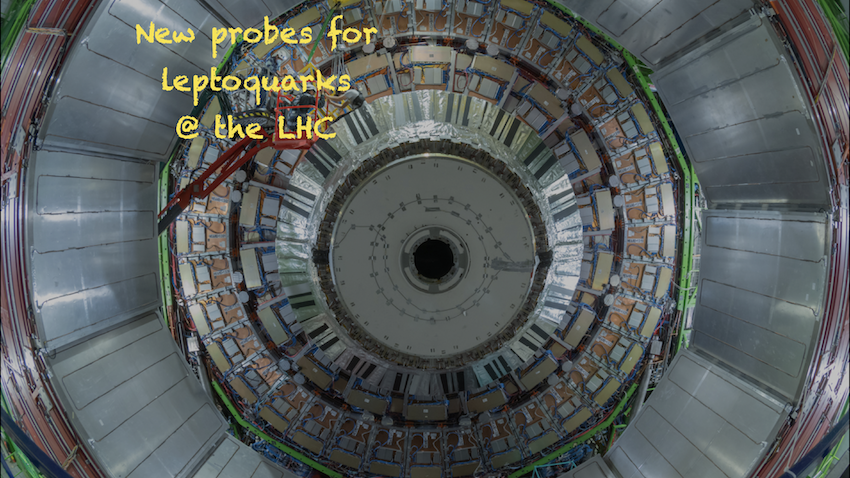
[Credits: Original image from Noemi Caraban Gonzalez (CERN)]
Leptoquarks? The new kids on the block!
This post is all about leptoquarks. Therefore, a good starting point would be a definition. Let’s go with it!
The Standard Model of particle physics contains several classes of fundamental building blocks of matter: quarks and leptons. The former are sensitive to the strong interaction (one of the four fundamental forces) whereas the latter are not.
That’s the main difference between them, and it leads to an important feature: quarks form bound states that further give rise to atomic nuclei at a larger scale, while leptons don’t (see this blog for more information on that topic). In particular, quarks include up and down quarks (that can be combined into protons and neutrons), and examples of leptons include electrons, muons and neutrinos.
In the Standard Model, quarks interact among themselves in three ways: through the strong force, the weak force and electromagnetically. On the other hand, leptons only interact via the weak and electromagnetic force. A similar story holds for the quark and lepton interactions with the Higgs boson (see here for more information on this beast). There is thus no Standard Model interaction involving simultaneously one quark and one lepton.
We can question the reason behind this. Why can’t we have interactions involving one lepton and one quark? Furthermore, we can also ask the opposite question. Why should we need a specific interaction involving one quark and one lepton? After all, there is no hint for such an interaction in all high-energy physics data of the last hundreds years.
So we have a puzzle…
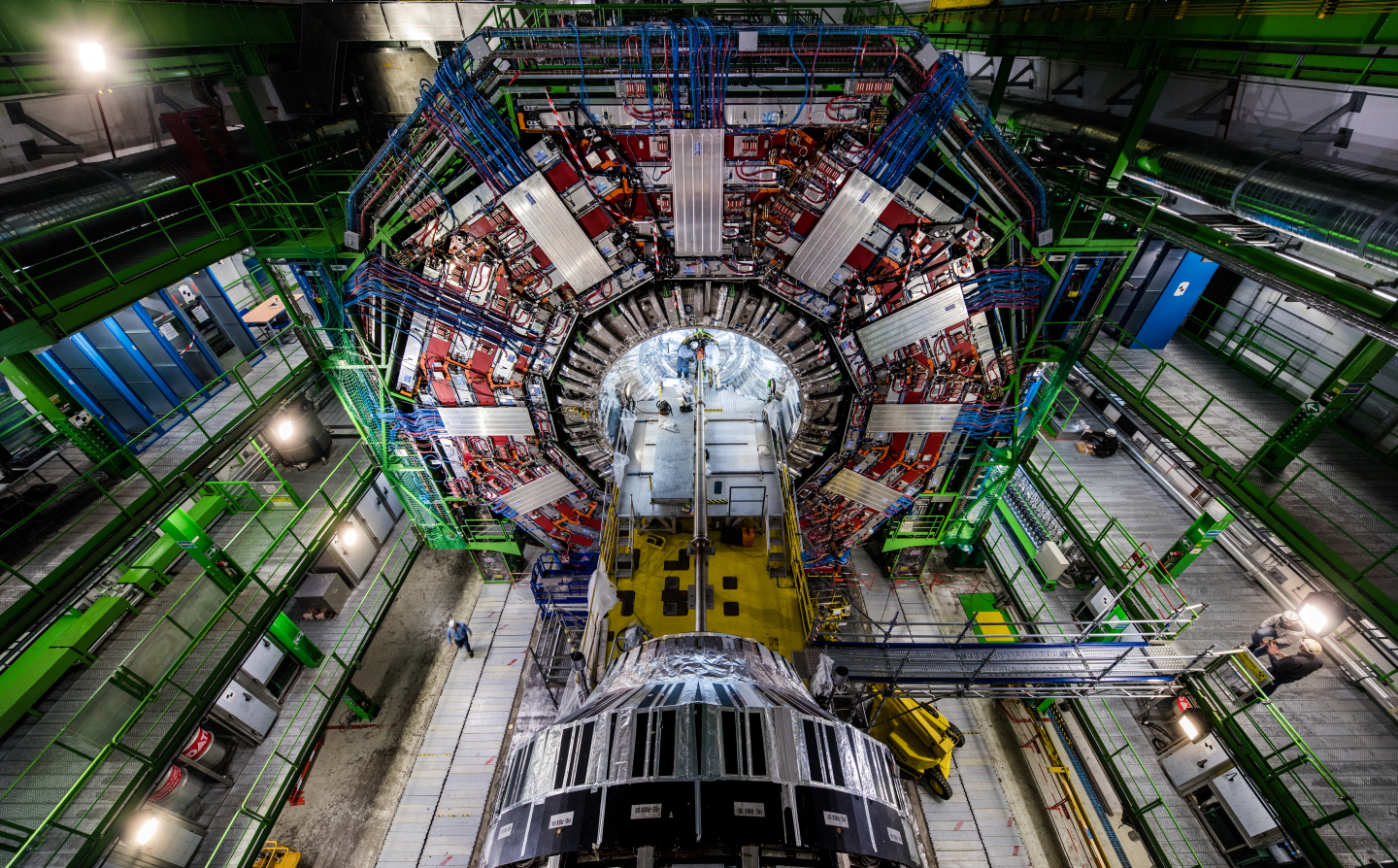
[Credits: Maximilien Brice (CERN)]
In order to find a way out, it is good to remember that physicists have always tried to find the most elegant description of nature. Even with a Standard Model of particle physics that works so well, there is good motivation to go beyond it (see here for more information). The quest for a more elegant framework for the dynamics of the fundamental particles is thus still a very active one.
In this quest for new phenomena, one option is to unify all fundamental interactions and make them the three facets of a unique force. Or at least, we can try to do so without violating any observation. Playing this game is referred to as building a Theory of Grand Unification.
One interesting consequence of such Grand Unified Theories is that they feature new particles that interact simultaneously with one quark and one lepton. These are coined leptoquarks. Here is the long-awaited definition!
It must also be emphasised that leptoquarks are also present in various other theories beyond the Standard Model, and that they are prime candidates to explain a few anomalies in data (see for instance this older blog). Leptoquarks are thus well motivated beasts, and therefore actively searched for in data by experimenters.
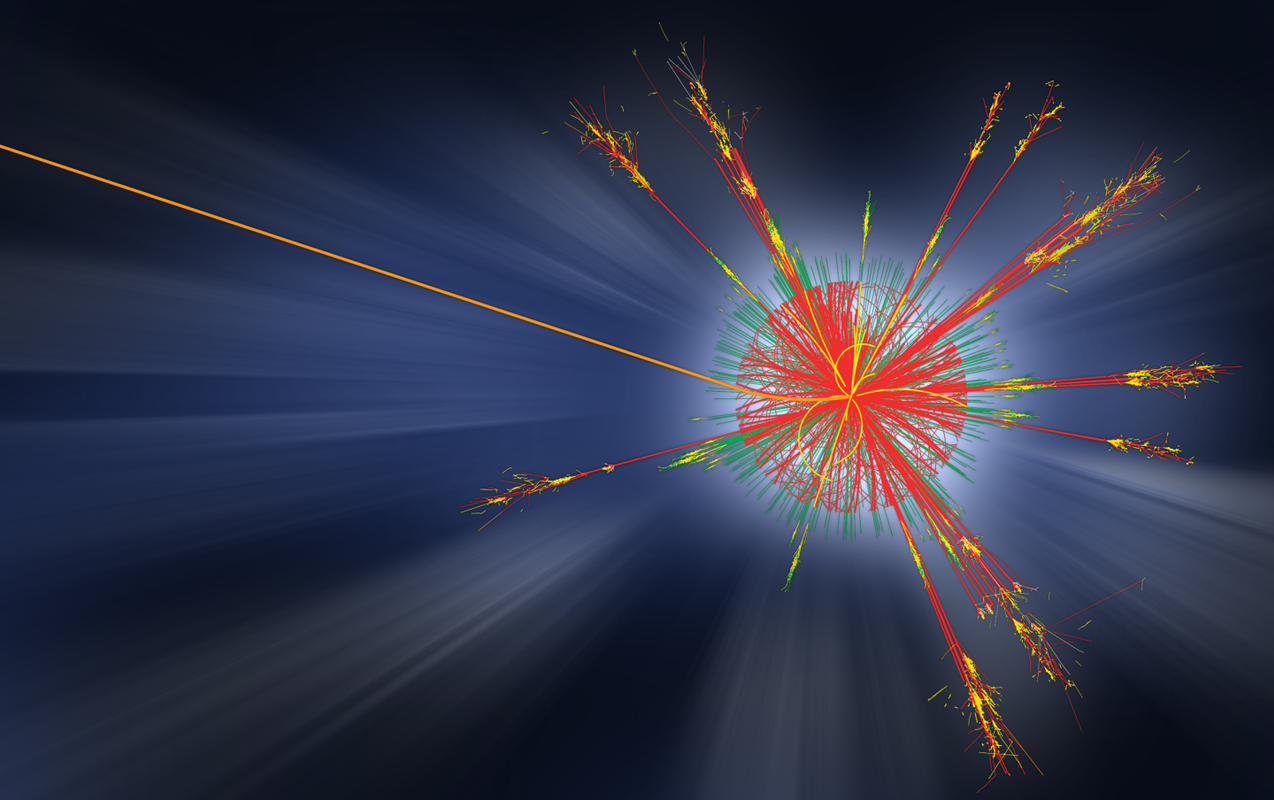
[Credits: ATLAS @ CERN]
Leptoquark signals at CERN’s Large Hadron Collider
The next 10,000 HBD question is about how to search for leptoquarks? In the following, I will give some insights on the answer to that, from the particle collider point of view.
As written above, a leptoquark couples to one quark and one lepton. Therefore, once produced, a leptoquark decays into one quark and one lepton. So, what to do with this property?
Let’s imagine that one leptoquark is produced at CERN’s Large Hadron Collider. Then, it immediately decays into one quark and one lepton, which defines a possible leptoquark signal. Now let’s imagine that this time a pair of leptoquarks are produced. Then, their decay gives rise to two quarks and two leptons. This defines a second generic signature of leptoquarks at colliders.
Most LHC searches for leptoquarks target their pair production and decay (the corresponding rates being generally larger). This yields a large set of potential leptoquark signatures to consider. As there are six quarks and six leptons in the Standard Model, there are many available options (all possible combinations of two leptons and two quarks). Unfortunately, experimental resources are limited, so that only a few signatures are investigated. In addition, some searches target leptoquark single production. Their sensitivity is however weaker.
All these searches give strong bounds on leptoquarks, but also a lot of freedom for leptoquark signals to evade the constraints (due to the non-considered channels in the experimental analyses). In all the searches, the leptoquark signals are however expected to originate from the pair-production of one a single leptoquark species.
Is it a reasonable assumption? The publication on which this blog focuses shows that it is not the case, and it gives insights on what could be done better for signal modelling.
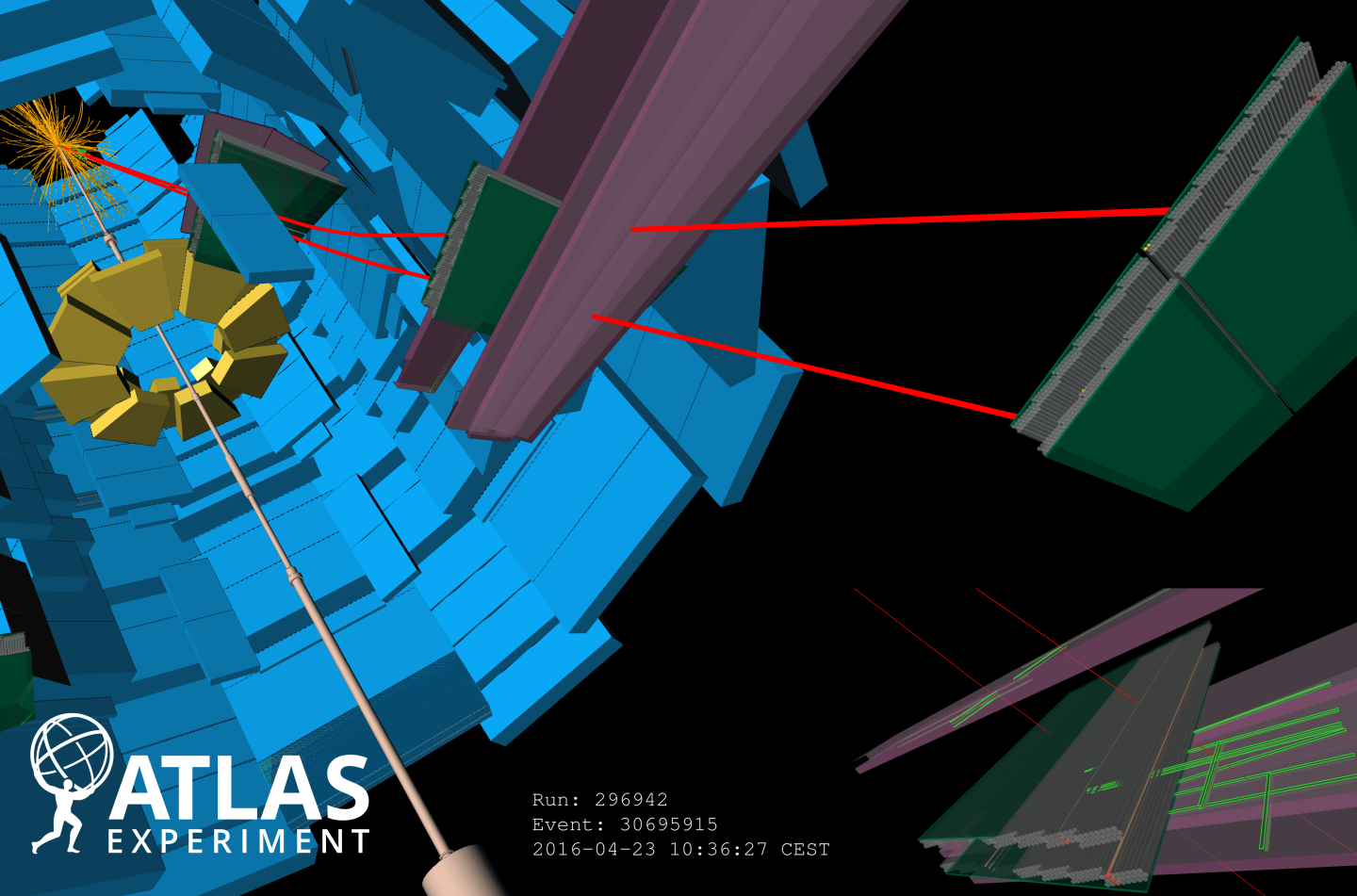
[Credits: ATLAS @ CERN]
Leptoquarks and anomalies in data
The Standard Model of particle physics includes a feature called lepton flavour universality. This means that if we take a process that leads to the production of any pair of leptons (for instance a pair of electrons, a pair of muons or a pair of taus), all related observations should be independent of the kind of leptons involved.
This comes from the fact that the only difference between the three types of leptons is their mass, and that these masses are all small (compared with the typical energy scale of a high-energy physics process). In other words, the mass difference between all leptons can barely yield any observable effect.
However, some recent measurements point to hints for lepton flavour universality violations. One possible way to restore agreement between data and theory is then to add leptoquarks to the Standard Model. Note the plural form: several leptoquarks and not a single leptoquark.
This leads to one important question relative to experimental searches for leptoquarks at the LHC: what is the impact of including several leptoquarks in the theoretical framework, instead of a single one? Should this affect the sensitivity of the LHC to leptoquarks?
This is what my collaborators and I have tried to address quantitatively, and in a precise manner (that's the real novelty of our work).
Let’s assume that we take a model motivated by an explanation to the current anomalies observed in data. Then, we must consider a model with a small set of leptoquarks (two to five for instance). In this case, it becomes possible to produce a pair of each leptoquark of the set, but also any combination of two different leptoquarks.
It is now time to focus on my publication and discuss one of its figures.
New mechanisms to produce leptoquarks at the LHC
The figure I have chosen is the one shown below. It discusses leptoquark pair production in the case of a model featuring 5 different leptoquarks. Such a model is favoured by the observed anomalies.
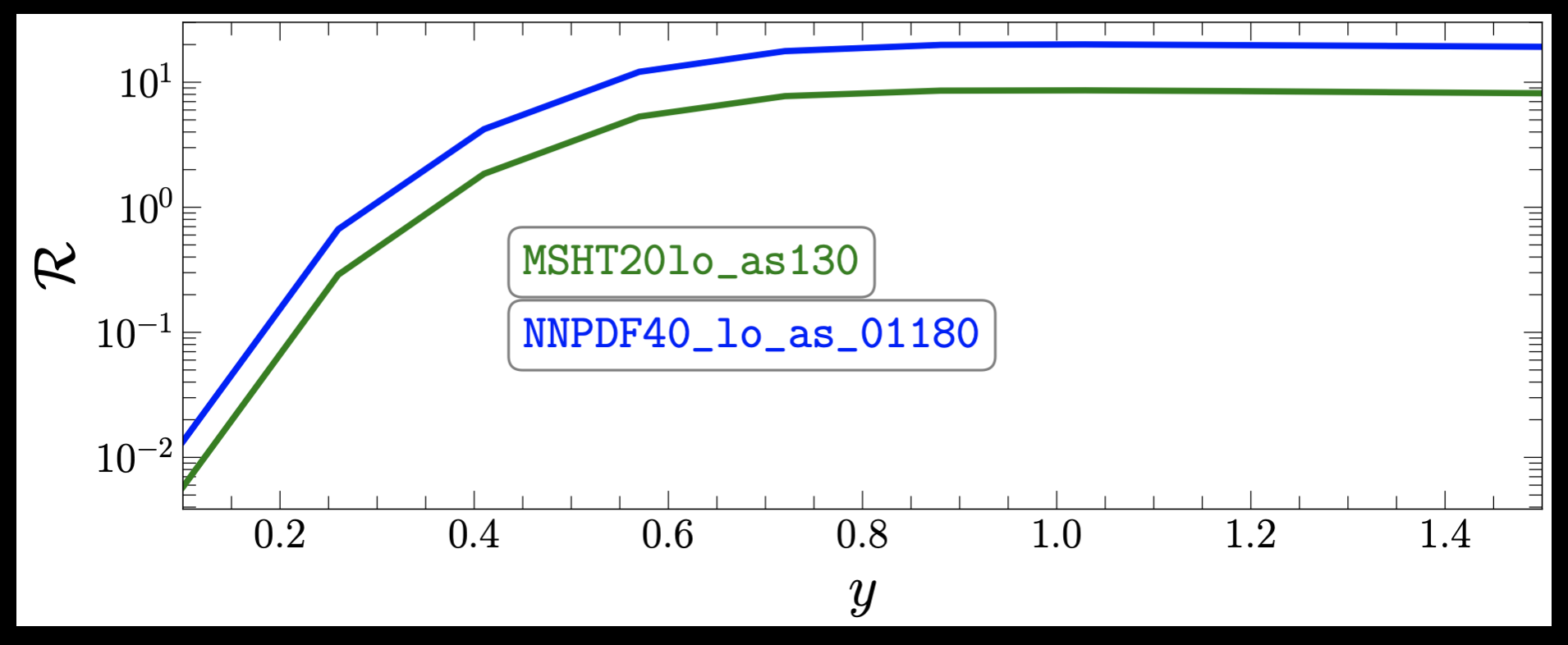
[Credits: arXiv:2207.02879 [hep-ph]]
What do we see in this figure?
First, let’s focus on the X-axis. This is the strength of the leptoquark coupling to a lepton and a quark. The bigger it is, the stronger the leptoquark is coupled. On the Y-axis, we introduce a quantity called R that is the ratio between the rate associated with the production of two different leptoquarks, to the rate associated with the production of two identical leptoquarks. I recall that only the latter is considered in LHC searches.
We see that for small y values, this ratio R is small. This means that leptoquark production is dominated by the production of a pair of two identical leptoquarks. At larger y values, this ratio increases significantly. This means that leptoquark production gets dominated by the production of two different leptoquarks.
It is a good moment to mention that anomalies are explained only if the value of y is large. We are thus in a situation where the production of different leptoquarks dominates, which contrasts with the hypothesis taken in experimental studies. The most important signals of motivated scenarios are thus just not searched for optimally.
This leads to a few questions. To which extent current searches for leptoquarks at the LHC really constrain favoured scenarios (signal rates being underestimated)? How could the sensitivity be increased by considering the signatures coming from the production of a pair of different leptoquarks? For now, we have no answer to these questions, although it is clear that there is an impact. We are working on it. Stay tuned!
I finish this discussion with a remark on the above figure. It includes two curves, a blue one and a green one. The difference between them comes from the manner to relate a proton to its content. This is critical because a high-energy proton-proton collision is in fact a scattering process of two of the constituents of the colliding protons, as detailed in this blog.
The blue and green curves correspond to two ways to link the protons to their content. We see that they disagree… This means that there is something important to learn here, and that knowledge still has some room to advance!

[Credits: CERN]
Summary: leptoquarks and new way to seek them at the LHC
Leptoquarks are hypothetical particles that interact simultaneously with one lepton and one quark of the Standard Model. As we have six leptons and six quarks, this gives numerous (actually 36) possibilities for these interactions. Moreover, leptoquarks are predicted by many theories aiming at curing some of the practical and conceptual limitations of the Standard Model, and they consist of prime candidates to explain some anomalies seen in high-energy physics data.
As a consequence, leptoquarks are actively searched for at the LHC. Taking their quark-lepton coupling into account, a typical leptoquark signal at the LHC originates from the production of one or two leptoquarks, followed by their decay. So far, most searches conducted by the ATLAS and CMS collaborations consider the production of a pair of identical leptoquarks that then decay into the same lepton+quark final state. This gives a signal that is made of two quarks and two leptons.
All measurements are currently compatible with the Standard Model background (i.e. the production of the same final state from Standard Model particles only), so that the results of the searches lead to strong constraints on the viability of leptoquark models.
However, these searches do not capture optimally the leptoquark signals of scenarios in which leptoquarks cure the anomalies seen in data. In this case, the theory should include several leptoquarks, and we should consider the production of both a pair of identical leptoquarks and a pair of different leptoquarks.
This is the possibility that I have investigated with my collaborators in one of my latest publications. We have demonstrated that the bulk of the leptoquark signal comes from the production of two different leptoquarks, and that the corresponding LHC signatures are actually not searched for.
To rewrite this shortly: we may not exploit the machine in the best potential way. We are currently extending our study, trying to be more quantitative relative to the last statement. However, this will be the topic of another blog. We first need to finish our study ;)
I stop here for today, and I hope you enjoyed this post about leptoquarks. Feel free to leave me comments, suggestions and feedback in the comment section of this blog. Engagement is always appreciated!
The rewards earned on this comment will go directly to the people( @lemouth ) sharing the post on Twitter as long as they are registered with @poshtoken. Sign up at https://hiveposh.com.
Wowsers, scary that I read all of that. This post really got me thinking, although I haven't heard about leptoquarks before so I would love to see what your studies bring about.
I'm an Engineering student in my freshman year and I have to say this topic is truly mind-blowing. I do have one question though, you say leptoquarks is the joining of a lepton and a quark. Do they join together naturally?
I am honoured to read that you read it fully! Thanks a lot!
What we try to do is to understand better how the universe functions at its most fundamental level. For now, we have a paradigm called the Standard Model of particle physics that works quite well. However, there are good signs that let us think that the Standard Model is only the tip of the iceberg.
The studies that I conduct (note that this is true for any particle physicist working on similar topics) target what is hidden and that we don't know about. We explore many paths to unravel this. As we don't know what it is and have no hint for anything, we need to consider all possible options. This is what I try to do at my level (exploring some options that I feel cool and interesting).
I don't know whether this answers your question. If you had more the "application" side in mind, maybe you could check comments by @agmoore and @apineda on the very same post. This should give you more insights on this.
Not exactly. A leptoquark is a particle that can interact simultaneously with one quark and one lepton, so that it could decay into this lepton-quark system. However, it is not a bound state of a quark and a lepton. It is really an elementary particle that can "transform" (more or less) into a quark and a lepton. Does this clarify?
Cheers, and thanks again for passing by!
Okay that clarifies a lot. Thanks for explaining that and I will check those comments
You are welcome. Please do not hesitate to come back to me if needed. I am always happy to chat and bring clarifications if needed.
Have a nice week!
Wonderful to see your blog again. I remember leptoquarks! There is a benefit to reading your blog a day later. I get to read the comments and responses. As would be true in an actual classroom, these are informative.Hello @lemouth,
Not now, not immediately maybe. But, "how our universe functions at its most fundamental level" may come in handy some day🙂. When Marie Curie did her experiments with pitchblende, did she know what the world would do with her knowledge? Did she envision x-rays, nuclear energy, nuclear bombs? Did she envision particle physics? The advancement of knowledge is a step into the unknown. It is in human nature to explore and go forward. We don't always know where those steps will take us.
When our earliest ancestors left Africa and wandered north, they may have been searching for food and shelter. Or, they may have been curious.
Advancing knowledge. It has taken the human race pretty far, hasn't it? Another great blog. Thank you!
Regards,
AG
Glad to read that you remember. I regularly chat about leptoquarks on chain, because of the interest they attract in the field. There is a clear correlation here. You seem however to be the only one who remembered ;)
Of course that's true. In the present case, there is however no way to know what would be the added value in 100 years, which is why I only referred to the (very) short term. In fact, that's the reason why when we perform a costs-benefits analysis of a particle physics project, it is impossible to account for potential applications. There is just no way to know (when this will occur and what this will bring). We can only talk about the present.
Definitely! So much has been done in a few 100,000 years.
Thanks for your comment and passing by!
First of all, I must say that it is a pleasure to be able to interact in some way, through this platform, with a Particle Physicist, that starting from the amount that you comment in the comments that exist in the world, an average of 10,000 in a world population of more than 7 billion, I can really say that you are part of a scientific elite, which is something very important.
I have read your post and I have reviewed some of the links you have left, evidencing that I definitely know little about it, therefore, I have more doubts than answers on this subject. But taking advantage of the fact that you will most likely be able to offer some answers, I don't want to pass up the opportunity.
I understand that leptoquarks are hypothetical, that is, they most probably exist, and they are looking for a way to study how they are related to other micro elements, which I know implies a great work of imagination based on science, because it is not something they can see properly, but rather deduce based on the elements that are in the experiment and the results that a machine can register.
This I can intuit from the knowledge I acquired in Biochemistry in my medical studies, where we cannot see biochemical processes, but we can intuit what is happening based on results.
Well, I have a question:
If you an your team discover completely how leptoquarks interact with other elements, what would be the usefulness of this discovery, obviously, my level of ignorance on the subject makes me look for the practical point to the information that could be obtained from the study that you and your team perform.
For example, I know that molecules when joining or separating release energy, and they use it in large quantities. Could this discovery allow us to produce energy? Will it be useful to understand other aspects of the origin of the universe itself? These are doubts that arose when I read your interesting publication.
And excuse the length of this comment...
Quite interesting.
I am curious, how many particle physicists do we have on this planet?
Will I get the prize if I answer this question? :)
The next 10,000 HBD question is about how to search for leptoquarks?
If you count everybody (theorists, experimenters), I guess we may reach a few 10,000s. Of course, not all of them work on LHC physics. Conversely, not everyone involved in an LHC experiment deals with physics analyses. There are so many tasks to be done. Apologies for not being able to be more precise here. I hope this suffices to satisfy your curiosity.
Good try, but the answer is "no", since I answer it in the blog.
Lol...even me...I really need that 10,000 HBD.
The ones that work on LHC, are they also that many?
You can count about 3,000 people for each of the ATLAS and CMS experiments. See respectively here and here for the two collaborations.
The two other LHC collaborations (LHCb and ALICE) are much smaller. Then of course, you may want to include the theorists working on these topics. However, even with them, we are probably still way below 10,000 people.
Very interesting! I guess leptoquarcks it is the new shining thing in physics!

!1UP
There are not so new as 'on the market ' for quite a while now (several decades). There was however a regain of interest due to anomalies in data and their potential explanation through the presence of leptoquarks. This may stay or disappear in a close future, depending on how the experimental situation evolves.
Cheers, and have a nice week-end!
💪😉🧠🤙 Nice. It's so cool to learn stuff on hive! i heard of quarks before, but this is all new to me..
If you are looking for an introductory post on quarks, I can recommend having a look at this post that I wrote almost a year ago. I describe the topics in detail, after starting from zero. I can also refer to this one which summarises one of my public lectures on the physics of the Standard Model of beyond.
Cheers, and thanks for passing by!
🤔🙏😉🤙 it goes over my head, but i think i got that fundamental entities called quarks are like the basic building materials? :P it's good to at least attempt at learning i guess.. :P
That's correct. Everything atomic nuclei in the universe contains quarks!
This is always good!
I don't think I have seen any particle physicist.
The introduction helped a lot. 👍👍
At least, you now know one of them online: me. Thanks for passing by and your nice message!
I no do, indeed.
You are welcome
Thanks for your contribution to the STEMsocial community. Feel free to join us on discord to get to know the rest of us!
Please consider delegating to the @stemsocial account (85% of the curation rewards are returned).
You may also include @stemsocial as a beneficiary of the rewards of this post to get a stronger support.
Yay! 🤗
Your content has been boosted with Ecency Points
Use Ecency daily to boost your growth on platform!
Support Ecency
Vote for new Proposal
Delegate HP and earn more, by @ebingo.
Congratulations @lemouth! Your post has been a top performer on the Hive blockchain and you have been rewarded with the following badges:
You can view your badges on your board and compare yourself to others in the Ranking
If you no longer want to receive notifications, reply to this comment with the word
STOPCheck out the last post from @hivebuzz:
You have received a 1UP from @gwajnberg!
@stem-curator, @vyb-curator, @pob-curator, @neoxag-curator, @pal-curator
And they will bring !PIZZA 🍕. The @oneup-cartel will soon upvote you with:
Learn more about our delegation service to earn daily rewards. Join the Cartel on Discord.